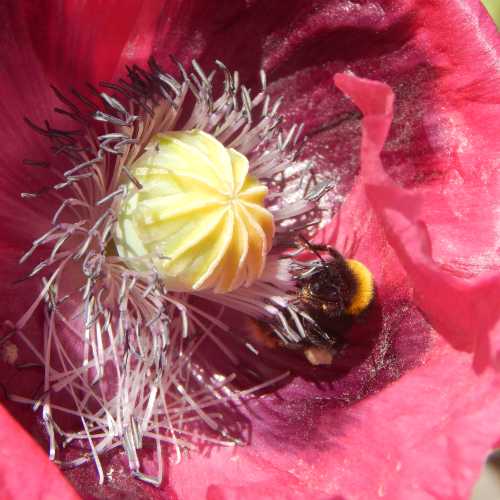5 Reasons To Add Wildflowers To Your Lawn Or Flower Border
As some-one who has been raising awareness of the plight of bees since 2008, one of the more recent gardening trends I have been most thrilled to see, is the inclusion of wildflowers - in lawns and garden borders. So many wildflowers are stunningly beautiful, and don't look at all out of place, so why not include them in the garden?
5 Reasons To Add Wildflowers To Your Lawn Or Flower Border
My hope is that more and more people will take up this trend, so if you are thinking about it and you have a bit of space, here are my top 5 reasons why you should go ahead:
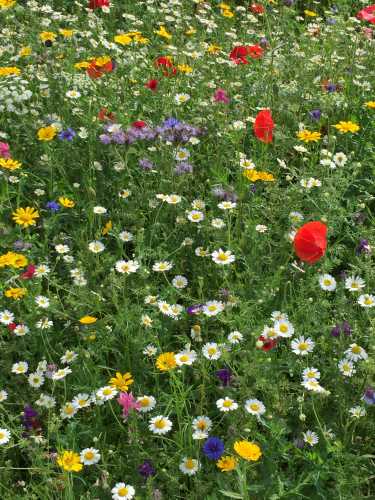 Wildflowers have offer their own beauty and charm
Wildflowers have offer their own beauty and charm
1. Pollinators
need more wildflowers – because we have lost so many wildflower habitats
The decline in wildflowers in the USA is relevant not only for bees, but also other pollinators, such as the monarch butterfly, and this is impacting specific plant species on a major scale.
For example, milkweed is the only group of plants that monarch caterpillars feed upon before they develop into butterflies.
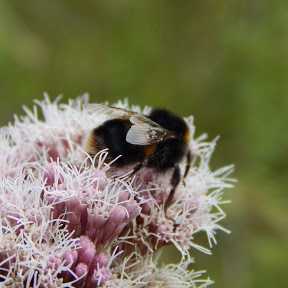 Above: Bumble bee feeding on hemp agrimony
Above: Bumble bee feeding on hemp agrimonyAccording to a study by Gelph University, industrial farming contributed to a 21-per-cent decline in milkweed plants between 1995 and 2013, and much of this loss occurred in the central breeding region(1).
Milkweed is relatively easy to plant if you follow the instructions (put the seeds in the fridge for about 2 weeks before planting).
Milkweed is also an attractive plant to have in the garden too.
It's a similar situation across Europe, including Britain.
“Before the Second World War, meadows dripping with wildflowers and humming with insects would have been a familiar sight across lowland UK. But in recent years, over 95% of our lowland meadows have disappeared” – say the UK Wildlife Trusts.
You may not be able to create a full-scale meadow, but it’s obvious that a wildflower area offers far greater benefit to pollinators than a uniform grass seed lawn.
On the other hand, many wildflowers will grow in the flower border, or even in pots or the rockery.
2. Your garden can make a difference!
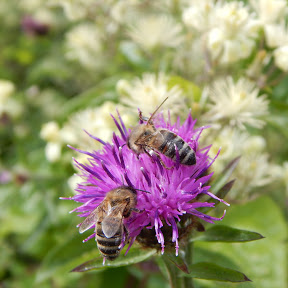 Above: The wildflower 'Knapweed' is a favourite with bees
Above: The wildflower 'Knapweed' is a favourite with beesDon’t underestimate the importance of gardens! They help to link habitats, and provide important (hopefully pesticide free!) food and shelter for a range of different types of bees and pollinators.
In addition, gardens collectively, cover a lot of space! I don't have
figures for the USA, but in Britain, they cover over 1 million ha of
land (take into account that Britain is a small island).
3. Increase biodiversity in your garden
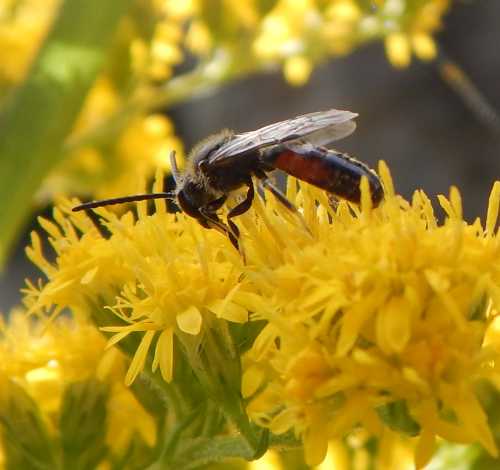 Bloomed furrow bee male on Solidago (Golden Rod)
Bloomed furrow bee male on Solidago (Golden Rod)
By including wildflowers in your garden, you’ll be able to attract a
greater variety of bees, butterflies, hoverflies and beetles.
If you have children, here is an experiment
to try: once the flowers are in bloom, take a plastic hoop, place it in the wildflower area, then count the
variety of invertebrates seen in a day. Move the hoop to different habitats over a period of a few days and again, record what is seen, then compare the results.
4. Visual beauty
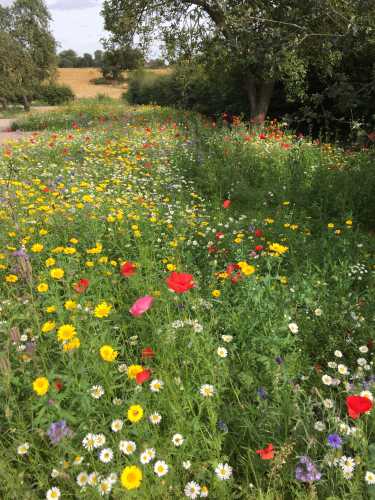 A swathe of mixed wildflowers.
A swathe of mixed wildflowers.Wildflower meadows are so few and far between these days, we’ve almost
forgotten how beautiful wildflowers are!
It’s a shame! They help to add a soft,
relaxed, and informal dimension to a garden.
5. There are wildflowers for most soil types and conditions
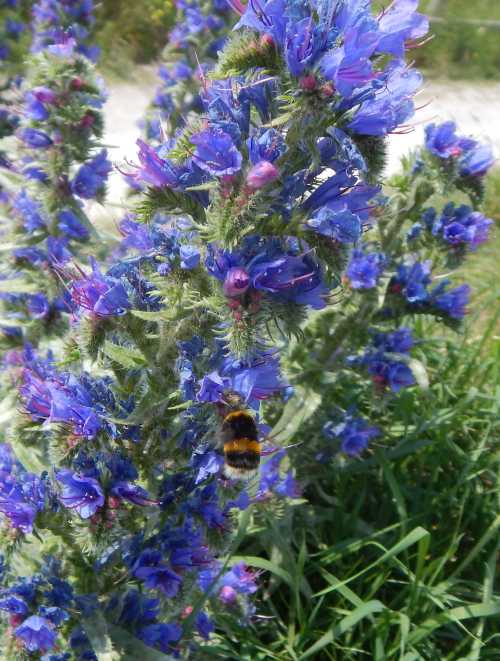 Viper's bugloss is a striking plant, and very popular with bees.
Viper's bugloss is a striking plant, and very popular with bees.Fortunately these days you can also buy wildflower seeds in relatively small quantities, perfect for a small patch-sized plot, and with mixtures to suit a variety of soil types, including clay or sandy soils, as well as shady areas.
Even if you only have a small space to spare, you can optimize the
space by selecting wildflower seeds that are correct for your soil type
and
conditions. Some wildflower plants are adaptable for multiple soil conditions.
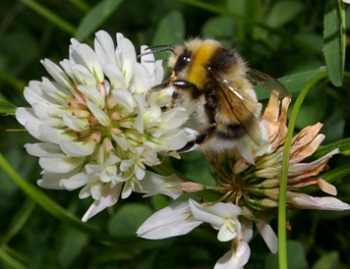 White-tailed bumble bee male on clover.
White-tailed bumble bee male on clover.It's also worth remembering that allowing low growing wildflowers to thrive in the lawn can also be helpful. Clover is a great example, another is bird's foot trefoil.
Conclusion
There are many options for adding wildflowers into your garden - whether it be a patch in your lawn or a selection chosen for the border. With a little imagination, it's possible to create a fabulous planted space that is buzzing, flying, fluttering and hopping with life, whilst being a delight to the human eye.
References:
(1) University of Guelph. "Habitat loss on breeding grounds cause of monarch
decline, study finds." ScienceDaily. ScienceDaily, 4 June 2014.
<www.sciencedaily.com/releases/
2014/06/140604203056.htm>.
Did you know?
If you found this page helpful or interesting, I'd really be grateful if you would share it with others - if not this page, perhaps another, such as Gardening For Bees.
Thank you so much :) .
